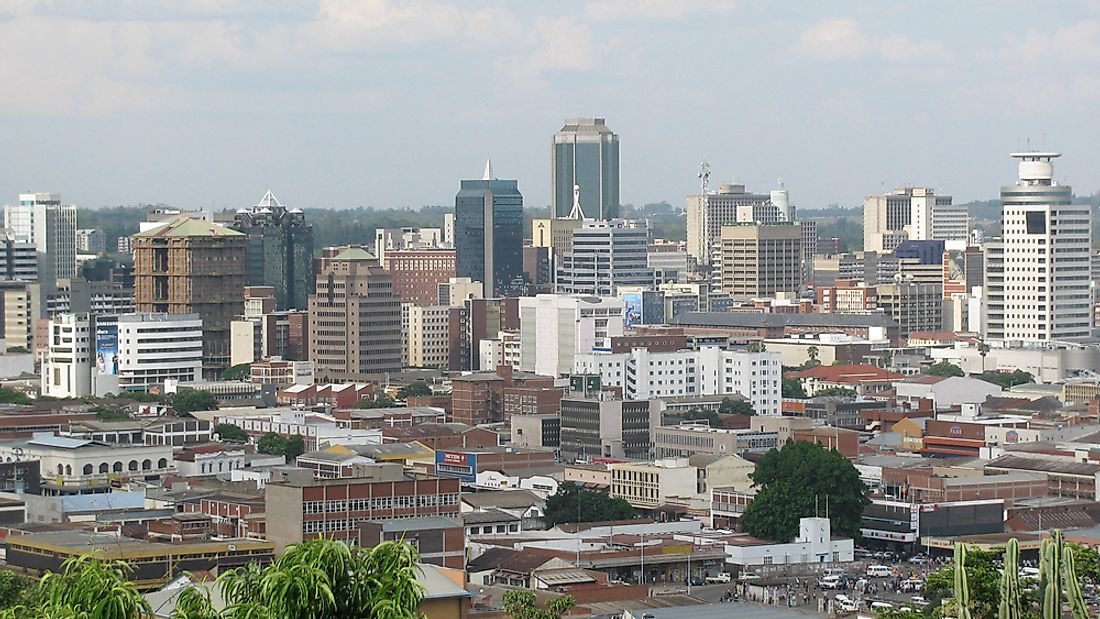What Type Of Government Does Zimbabwe Have?

Once under British rule, Zimbabwe has been an independent nation since 1980. As the country has transitioned into independence, it has experienced significant political unrest and big administrative changes. The Constitution allows for majority rule while protecting minority rights. It has been amended several times. The last Constitutional Referendum took place in 2013. Its major changes included: limiting the President to two 5-year terms, eliminating presidential veto power, and establishing several commissions.
Government of Zimbabwe
Today, the government works as a presidential republic. Under this system, the President, elected by the public, is the head of the state and the executive branch of the government. Regionally, Zimbabwe is divided into 8 provinces. A presidentially-appointed Governor administers each province with the help of provincial administrators and ministries. These provinces are divided into 63 districts. The nation’s Parliament holds legislative and rule-making power. Additionally, the country has a judicial branch for matters of the court. These three branches are discussed below.
Legislative Branch
The legislative body of the government of Zimbabwe is held by Parliament. Parliament consists of 120 seats, which are elected by the public. Other individuals also hold seats in this Assembly, although they are appointed. The appointed positions include 12 presidential appointments, 8 provincial governors, the Speaker, and the Attorney General. Ten tribes are also represented in Parliament by their Chiefs. Each parliamentary member may serve for a 5-year term.
Executive Branch
The President of the country is the head of the executive branch of government. The President and Vice President take their positions based on majority public vote. As previously mentioned, the term for the Presidency is 5-years for a maximum of 2 times. Previously, a president could serve an unlimited number of 6-year terms. Robert Mugabe served as president of Zimbabwe from 1987 to 2017, having been elected in 1990, 1996, 2002, 2008, and 2013. In November 2017, the 93-year-old president resigned, and Emmerson Mnangagwa was sworn in as the third president of Zimbabwe. The President has the responsibility of appointing Cabinet members. These Ministers manage and administer various public offices according to the decisions taken by the legislative branch. It is their job to carry out the actions of government.
Judicial Branch
The head of the judicial branch is the Chief Justice of the Supreme Court of Zimbabwe. The Judicial Service Commission advises the President of suitable candidates for this position, but the decision to appoint is ultimately made by the President. The Supreme Court is the highest court of the country, giving the final order in cases and the final stop in the appeals process. It consists of five judges, including the Chief Justice. While Parliament is based on English common law, the judicial system is based on Roman-Dutch law with some aspects modeled after South African law. Below the Supreme Court is a High Court made up of appellate departments. Below the High Court are regional Magistrate’s Courts which have jurisdiction over civil and criminal cases that involve traditional laws and customs.
Presidents of Zimbabwe
| Rank | Name | Elected | Took Office | Left Office | Political Party |
|---|---|---|---|---|---|
| 1 | Canaan Banana | 1980, 1986 | April 18, 1980 | December 31, 1987 | ZANU |
| 2 | Robert Mugabe | 1990, 1996, 2002, 2008, 2013 | December 31, 1987 | November 21, 2017 | ZANU–PF |
| 3 | Emmerson Mnangagwa | - | November 24, 2017 | currently holding office | ZANU–PF |











